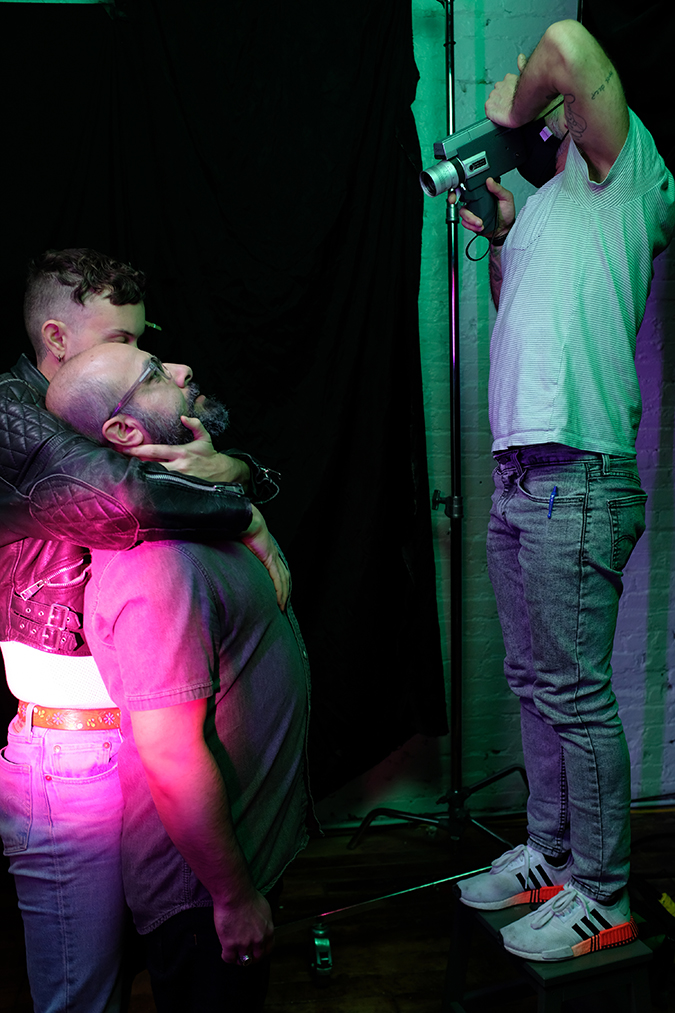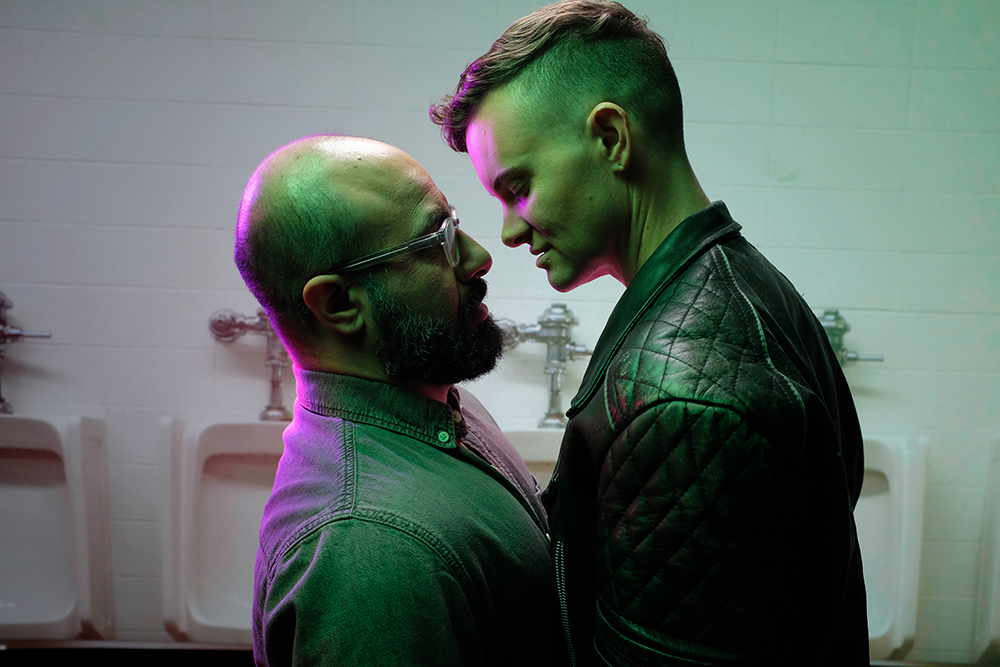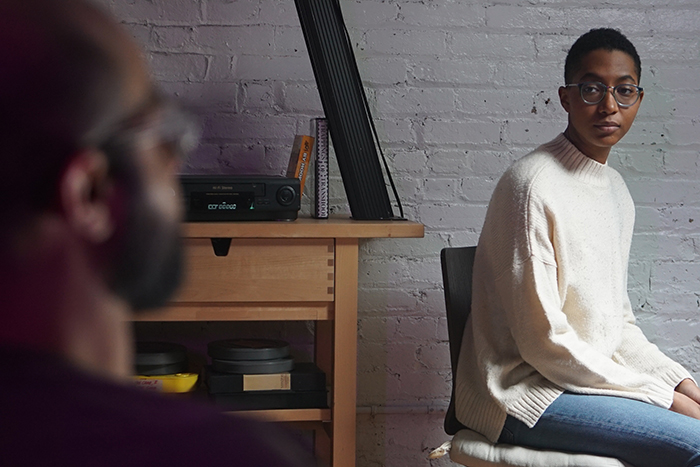Filmmaker Jules Rosskam, assistant professor in the Department of Visual Arts at UMBC, was awarded a prestigious Creative Capital Award in 2021 to support production of his new feature film, Desire Lines.
One of the most sought-after prizes in the art world, each year Creative Capital distributes awards to artists to fuel significant projects. Creative Capital recipients are a who’s-who of the art world, including artists like Wu Tsang, Cassils, Barbara Hammer, and Meredith Monk receiving up to $50,000 to fund new works. In 2021, 42 artists and 35 projects spanning all disciplines were awarded Creative Capital awards.
Building on Rosskam’s body of work devoted to examining liminal spaces—the margins inhabited by trans people and artists blurring boundaries in genre and method—Desire Lines explores the ways that trans men emerge into gay sexual attractions during transition, and the ways that these narratives have historically been suppressed.

Examining the Margins
“Trans people, people of color, queer people, we are so often written out of history, and [struggle] through those silences, and institutions not feeling like our lives are worth documenting,” Rosskam says.
According to the 2015 U.S. Transgender Survey, 23 percent of trans people identify as exclusively gay/lesbian, with 48 percent identifying as queer or bisexual. Only 23 percent of trans people define themselves as heterosexual—meaning that trans men attracted to other men is a common experience, even though the histories of this phenomenon have been hidden.
“The impetus is that for the last 20 years I’ve been watching the trans community, and seeing when folks come out as trans men and develop an attraction for other men. It’s felt like no one was having, like, a meaningful dialogue about it, and I, honestly, for the last 10 years have been waiting for someone else to make the film about this,” says Rosskam. “Finally, I said, okay, I’ve been thinking about this for 20 years, I think I have to make a film about it.”
Desire Lines centers its narrative on a gay-identified trans man seeking information on these hidden histories and begins the search by delving into researching archives.
“I think many trans and queer people can relate to searching for evidence of their own existence,” says Rosskam. “We go with him into this archive, and engage a lot of different material about trans masculinity and queer culture and bathhouses—and find people like Lou Sullivan, who, to the best of our knowledge, was the first gay-identified trans man in North America.”
Indeed, Lou Sullivan looms as a significant historical transgender figure. Sullivan, who died in 1991 from AIDS-related complications, left behind 30 years of diaries detailing his transitional journey, and these diaries were published to great fanfare in 2019. A pair of recent short films have helped elevate greater awareness of Sullivan’s life.

Hybrid storytelling
While Rosskam brings Sullivan into the picture, Desire Lines resists the urge to become a traditional documentary.
“I typically describe my work as experimental nonfiction. I am almost always working in a hybrid space between fiction and nonfiction, because that to me feels very trans, and I think it’s important in the work to unsettle that line. People think the line between fiction and reality is so clear—when in fact, it’s not,” Rosskam says, indicating that speculative fiction methods play into the film’s narrative.
“In the process of our character researching his own existence, he writes himself into history. Throughout the film, he actually creates evidence of his own existence by simply engaging with the past. And so it begs this question about the ways I think trans people experience time in a nonlinear fashion, where the past is always influencing the present. We have to be able to imagine ourselves into existence in order to exist. It’s about the power of fantasy and desire to make real,” says Rosskam. “The space that the film exists in is both a kind of hybrid space of an archive, and a bath house.”
While bath houses may seem like a distant memory for some, they remain a significant site of community building for many gay-identified people, including trans men.
“In those early conversations I was having with people, I was rather surprised to find out how many of them talked about going to gay bath houses, and how big of a role going to the bath house had played, like coming to accept their bodies as trans men. It’s a place where many men go to have sex with other men, trans or cis, but it’s also a community space where people would connect.”
The bath house also looms as a sort of archive in Rosskam’s perspective, providing communication of intergenerational experience.
“As queer and trans people, our histories are generally passed from person to person, and there’s a lot of emphasis on intergenerational relationships, and so younger people really are learning how to be themselves through close contact with people who are older than them. As a trans masculine person. I know a lot of young trans people, but I personally know [only] two transmasculine people who are over the age of 60. I don’t feel like I ever got that mentorship from older trans people.”
Desire Lines is currently in production, with documentary footage being shot in Chicago this winter and an expected release date of early 2024.
Tags: CAHSS, visual arts

